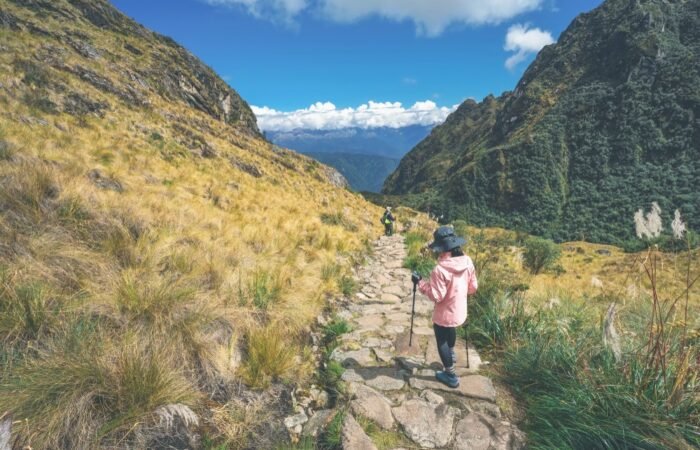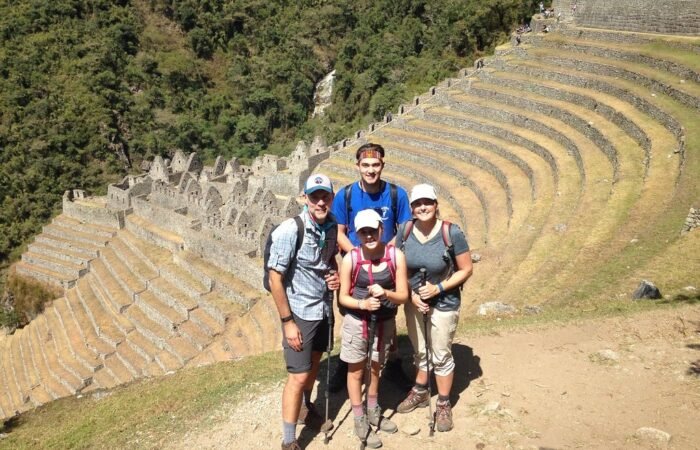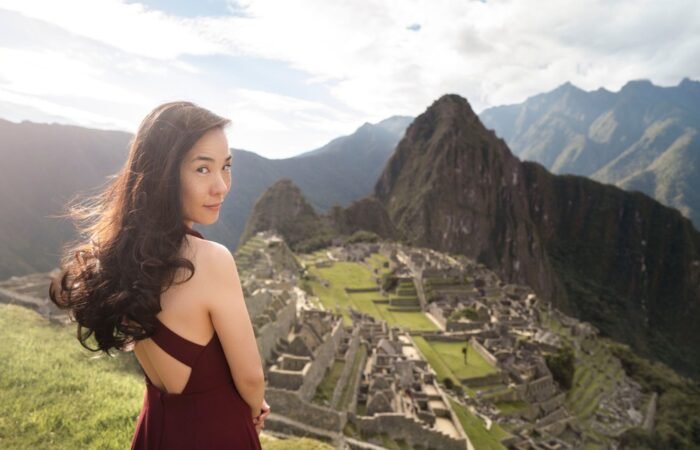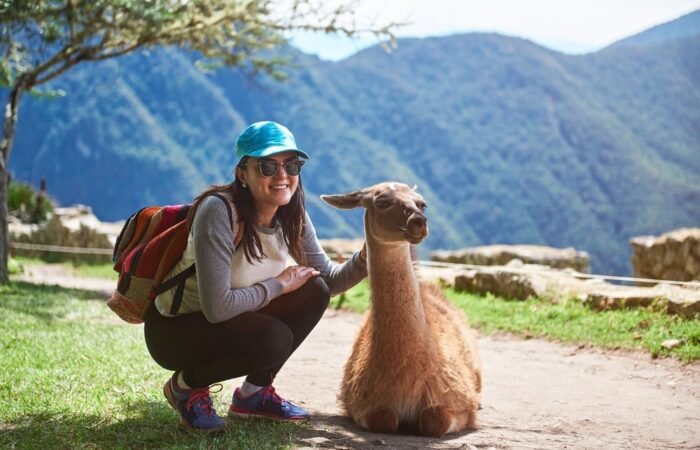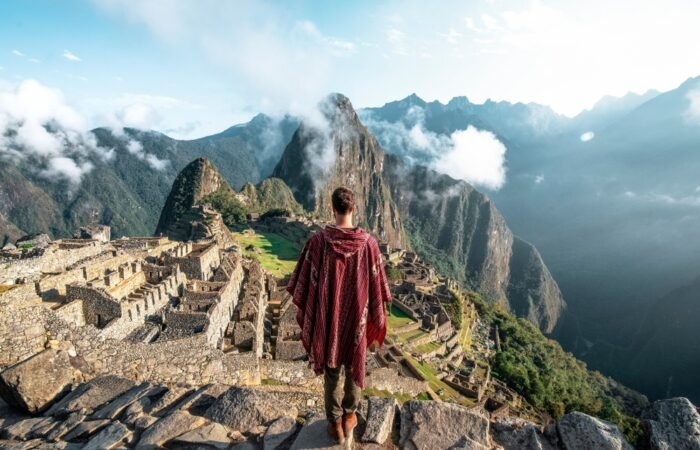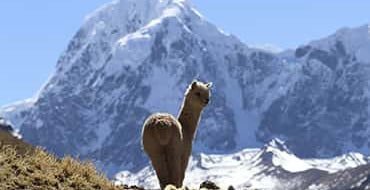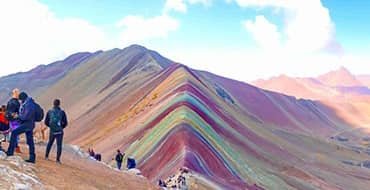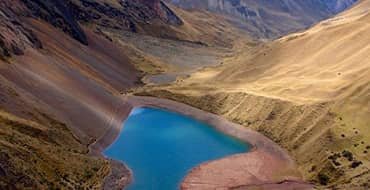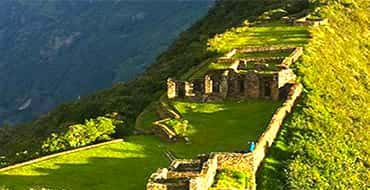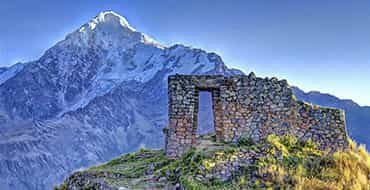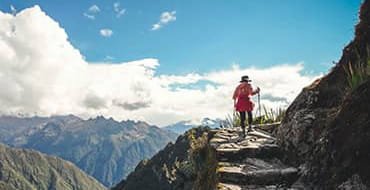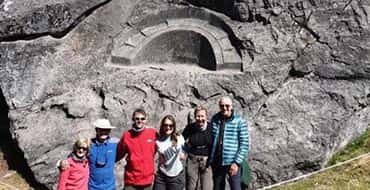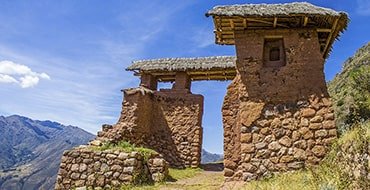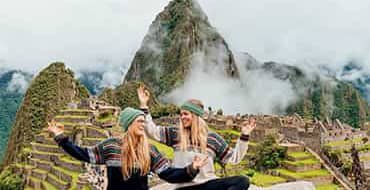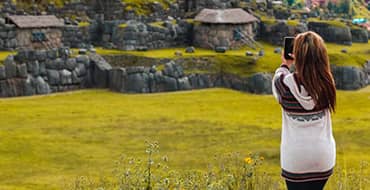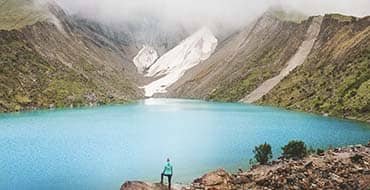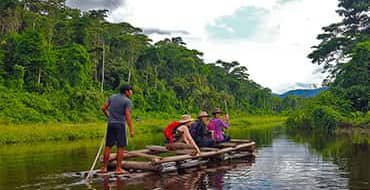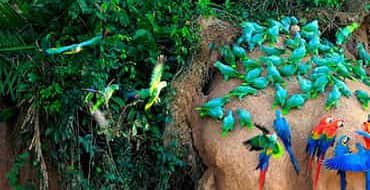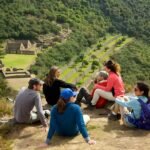
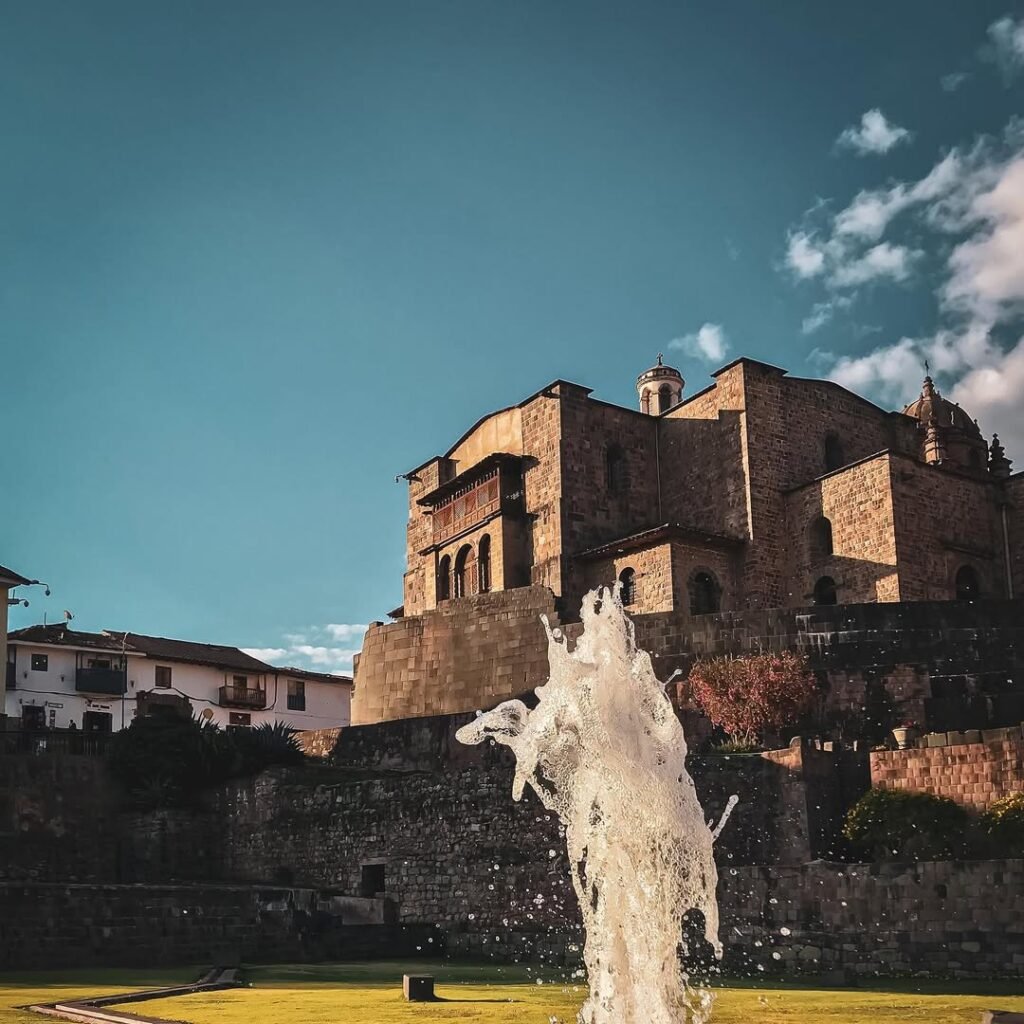
Introduction to Qorikancha
Qorikancha, known as the Temple of the Sun, stands as a remarkable testament to the architectural and cultural prowess of the Inca Empire. Situated in the heart of Cusco, Peru, this ancient site is strategically located at the convergence of several important Inca roads, making it a prominent landmark in the region. Its geographical positioning not only emphasizes its importance within the empire but also highlights the Inca’s sophisticated understanding of urban planning and alignment with celestial bodies.
The historical significance of Qorikancha extends far beyond its physical structure. It was a vital religious center dedicated to Inti, the Inca sun god, and served as the principal temple of the empire. This dedication illustrates the profound reverence that the Inca civilization held for their deities, particularly for Inti, who represented warmth, agriculture, and prosperity. Qorikancha was not only a place of worship but also a reflection of the Inca’s cosmological views, which held the sun as the center of their universe.
The temple was originally constructed in the 15th century, during the reign of the Inca emperor Pachacuti, and it showcased their advanced engineering capabilities. Its walls were once covered in sheets of gold, symbolizing the sun’s celestial nature and embodying the Inca’s wealth and power. Following the Spanish conquest in the 16th century, much of Qorikancha was dismantled, and the Spanish built the Santo Domingo church atop its ruins. This interaction between the original Inca architecture and colonial influences presents a complex narrative of cultural collision and adaptation.
Today, Qorikancha serves as an essential site for understanding Inca history and culture, attracting numerous visitors each year who come to explore its storied past and architectural marvels. The blend of Inca and colonial histories continues to captivate scholars and tourists alike, emphasizing the need for preservation and appreciation of this historical gem.


Historical Background
The Qorikancha, also known as the Temple of the Sun, holds a prominent place in the history of the Inca civilization, marking its significance from the early Inca period through to the onset of the Spanish conquest. Initially constructed in the 15th century during the reign of Emperor Pachacuti, the temple served as the most important religious site for the Incas. It was dedicated to Inti, the Sun God, who was venerated as one of the principal deities within the Inca pantheon.
During its early years, Qorikancha was a modest edifice, gradually expanding as the Inca Empire grew in power and influence. The temple was elaborately designed, showcasing exquisite stonework and luxurious offerings, including gold and silver that adorned its interior. Through the expansion into other regions, the Inca established a network of worship, making Qorikancha the central hub for religious and ceremonial practices. Its significance was augmented by the establishment of various priestly orders, which maintained the temple and performed rituals aimed at appeasing the gods, particularly Inti.
Key historical events contributed to the temple’s prominence, such as the consolidation of power under emperors like Tupac Inca Yupanqui, who enhanced its architectural features and religious importance. However, the advent of the Spanish conquistadors in the 16th century marked a dramatic shift for the Qorikancha. The conquest led by Francisco Pizarro not only resulted in the looting of the temple’s wealth but also instigated a cultural and religious transformation that fundamentally altered its role in society.
Despite the devastation brought upon by the Spanish conquest, the remnants of the Qorikancha serve as a poignant reminder of the Inca civilization’s cultural richness and the historical events that shaped its legacy. The temple’s ruins, integrated into the colonial construction that arose afterward, stand today as a site of both historical reflection and cultural resilience.


Architectural Features
The Qorikancha, also known as the Temple of the Sun, stands as a remarkable testament to the architectural prowess of the Inca civilization. Its design exemplifies not only the technical skill of ancient builders but also the profound cultural and religious significance embedded within its layout and materials. The structure was originally constructed with remarkable precision, utilizing large stone blocks that were expertly shaped to fit together without the use of mortar. This kind of masonry not only provided structural integrity but also demonstrated the Incas’ understanding of the terrain and their environment.
The layout of the Qorikancha was meticulously planned, with different areas designated for various deities, including the Sun, the Moon, and the stars. Each section of the temple was aligned with astronomical events, reflecting the Incan belief in the interconnection between the heavens and their earthly existence. This careful alignment highlights the cultural importance of the temple, as it served both as a center of worship and as an astronomical observatory, allowing priests to track celestial movements that dictated agricultural practices.
Furthermore, the temple’s original interior was adorned with an opulent cover of gold, signifying the immense wealth and power of the Inca Empire. Gold, considered sacred, not only reflected sunlight but also symbolized the Sun God, Inti. While much of this gold was looted during the Spanish conquest, the evidence of its former glory can still be appreciated in the stonework and the remnants of intricate carvings that line the temple’s interior. These architectural features of the Qorikancha illustrate not only the sophistication of Incan engineering but also their deep reverence for the natural and celestial worlds, ultimately underscoring the temple’s significance within the broader context of Incan culture and cosmology.
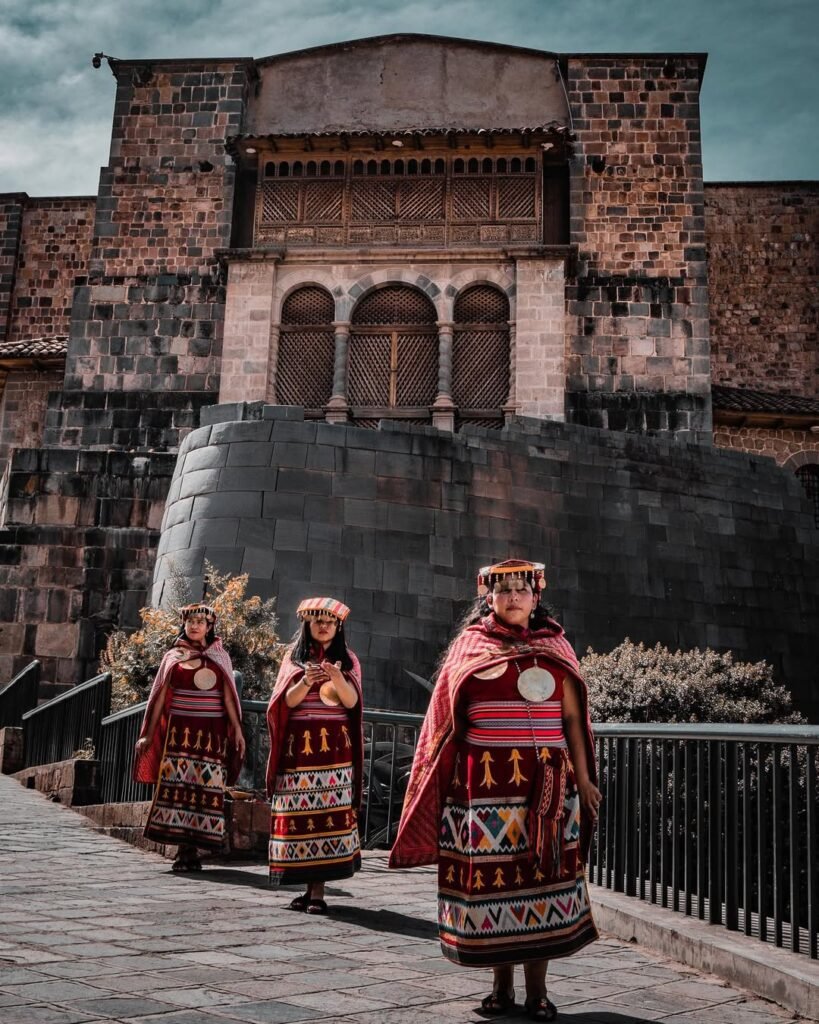
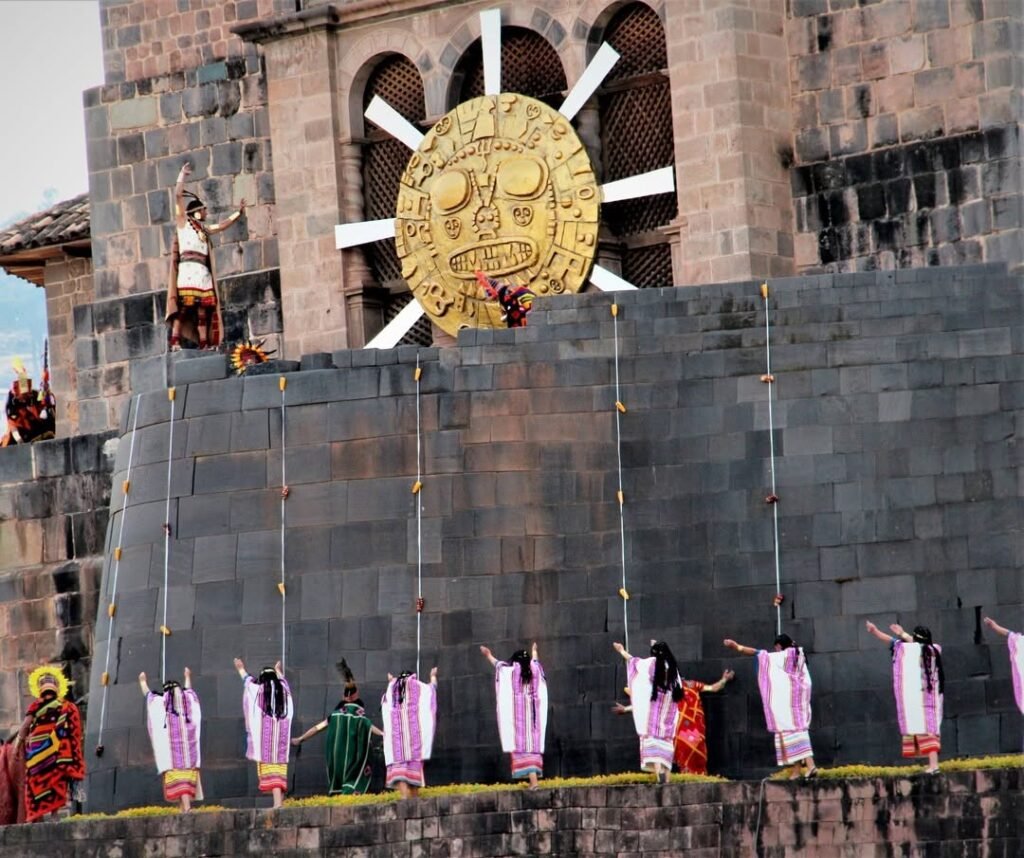
The Role of Qorikancha in Inca Religion
Qorikancha, known as the Temple of the Sun, held immense spiritual significance within the framework of Inca religion. It was revered as one of the most important sanctuaries, dedicated primarily to Inti, the Sun God, who was perceived as a central deity in the Inca pantheon. The Incas believed that Inti was the source of light and life, and thus, the worship practices at Qorikancha were fundamentally aimed at honoring him and ensuring his favor. The temple served not only as a place of worship but also as a reflection of the Inca people’s deep reverence for celestial bodies and the natural world.
Rituals dedicated to Inti were integral to the Inca religion, as the Incas engaged in various ceremonies intended to celebrate the sun’s cycles. These rituals included offerings of food, such as chicha (a corn beer), and other valuable items, which were presented to the deities to evoke blessings for agriculture and rain. The temple’s architecture was designed to align with astronomical events, reflecting a sophisticated understanding of the cosmos, allowing priests to observe celestial phenomena and conduct ceremonies that aligned with the solar calendar.
Moreover, Qorikancha was not limited to the worship of Inti alone; it was also a sanctuary for other celestial deities, including Pachamama, or Mother Earth, and the moon goddess, Mama Quilla. This multi-faceted approach to worship illustrates the Inca belief in the interconnectedness of celestial bodies and their influence on terrestrial life. The temple acted as a focal point where the Incas could communicate with these deities, enabling a complex spiritual framework that underpinned their society.
Thus, Qorikancha exemplified the profound role of religious practice within the Inca civilization, encapsulating their beliefs about the universe and their place within it. The rituals performed here were essential for the cohesion of Inca society and the sustenance of their agricultural lifestyle, demonstrating the lasting legacy of this sacred site in Inca culture.


Spanish Conquest and Transformation
The Qorikancha, originally known as the Temple of the Sun, was a significant religious site for the Inca civilization, symbolizing their deep-rooted spiritual beliefs and practices. With the advent of Spanish colonization in the 16th century, this important structure experienced a profound transformation that marked the beginning of the blending of Inca and Christian traditions. The Spanish conquistadors, driven by a desire to convert the indigenous population to Christianity, repurposed the temple’s original function.
Upon their arrival, the conquerors were struck by the temple’s architectural grandeur, which included intricate stonework and gold coverings thought to symbolize the rays of the sun. In an effort to impose their religious beliefs, the Spanish dismantled significant portions of the Qorikancha and constructed a colonial church, the Santo Domingo, on its foundations. This transformation was not merely architectural; it also represented a significant ideological shift. The existing Inca deities were supplanted by Christian figures, altering the spiritual landscape that had previously been dominated by the worship of Inti, the sun god.
The impact of this transformation on Inca traditions was profound. Traditional rituals and ceremonies that honored the sun and other deities were diminished, forcing the indigenous peoples to adapt to the new religion and customs imposed by the Spanish. Despite the colonial-imposed changes, many aspects of Inca culture persisted, often merging with Christian elements. Artistic expressions in the region began to reflect this fusion—churches incorporated indigenous artistry, and some Inca traditions survived under the veneer of Christian practices, representing the resilience of the original beliefs.
In the aftermath of the Spanish conquest, the Qorikancha became a symbol not only of loss but also of adaptation, where Inca heritage intertwined with colonizing influences. This blending continues to influence the cultural and religious practices of the Andean people today.


Modern Significance of Qorikancha
Today, Qorikancha stands as a prominent tourist attraction, drawing visitors from around the globe who seek to explore its rich history and intricate architecture. The site not only serves as a monumental remnant of the Incan civilization but also as a representation of Peru’s unique cultural identity. As a blend of indigenous heritage and colonial influence, Qorikancha has become emblematic of the nation’s historical narrative, symbolizing resilience and adaptation across centuries.
The ongoing preservation efforts aimed at maintaining Qorikancha are crucial in safeguarding this cultural landmark for future generations. Modern conservation initiatives focus on restoring the original structures while integrating contemporary materials that respect the site’s historical context. These efforts reflect a commitment by the Peruvian government and cultural organizations to honor their heritage and promote historical awareness among citizens and visitors alike.
Moreover, Qorikancha serves as a point of national pride for Peruvians. It acts as a reminder of the advanced engineering and architectural skills of the Incas, reminding locals of their rich heritage. Educational programs aimed at schools and communities emphasize the importance of Qorikancha, fostering a sense of belonging and collective identity among Peruvians. This cultural landmark, therefore, transcends mere tourism; it plays an essential role in shaping the national consciousness, encouraging an appreciation for both traditional customs and contemporary practices.
In addition, the increased influx of tourists to Qorikancha has bolstered the local economy, providing employment opportunities and encouraging the growth of related businesses. This economic impact reinforces the site’s significance not only as a historical monument but also as an integral component of Peru’s socio-economic landscape. The combination of historical relevance, national pride, and economic vitality ensures that Qorikancha remains a significant element of modern Peru.


Qoricancha Today: What to See?
Qorikancha, also known as the Temple of the Sun, stands as a testament to the rich cultural and historical heritage of the Inca civilization. For those interested in visiting this remarkable site, it is essential to note its current opening hours, which are typically from 8:00 AM to 5:30 PM daily; however, it is advisable to check for seasonal variations or local holidays that may affect accessibility. Exploring Qorikancha can be a rewarding experience, making guided tours a popular option that enhances understanding of its significance.
Engaging a guided tour often provides the most informative experience, as knowledgeable guides illuminate the temple’s intricate history, architectural elements, and the symbolism behind its structures. Many of these tours last around one hour, allowing visitors to appreciate the central courtyard, stone walls, and the remains of the colonial church built upon the site. Audio guides are also available for those wishing to explore the temple at a personalized pace.
To fully enjoy the visit to Qorikancha, consider arriving early in the day to avoid larger crowds. Comfortable footwear is advisable since the site features various paths and steps. Photography enthusiasts will find ample opportunities, as the combination of Inca stonework and Spanish colonial architecture creates stunning visual contrasts. Additionally, visitors should take time to explore the adjoining Museo Qorikancha, where fascinating artifacts and exhibits further explain the cultural importance of the temple and its impact on contemporary Peru.
In summary, Qorikancha represents an essential destination for those seeking to delve into Peru’s Inca history. Thoughtful planning regarding tours and visiting hours can greatly enhance the experience, allowing guests to appreciate its historical significance and visual beauty fully.

Qorikancha in Popular Culture
The Qorikancha, also known as the Temple of the Sun, has garnered significant attention in popular culture, particularly within literature, film, and visual arts. This architectural marvel, originally a central religious site in the Inca Empire, has become a symbol of Incan heritage, often depicted as a beacon of ancient wisdom and spirituality. Its representation transcends mere physical structures, embodying the rich cultural tapestry of Peru and the legacy of the Inca civilization.
In literature, authors have frequently drawn upon the mystique surrounding the Qorikancha to explore themes of spirituality, colonialism, and cultural identity. Many novels set in Peru reference the temple, often contrasting Incan beliefs with Spanish colonial narratives. This juxtaposition not only creates a dialogue between past and present but also highlights the enduring significance of the Qorikancha as a historical and cultural emblem. By incorporating the temple into their narratives, writers emphasize its importance in understanding the Incan worldview and the consequences of cultural imperialism.
Additionally, the Qorikancha has been featured in various cinematic works that showcase both its architectural grandeur and historical narrative. Films often utilize the temple as a backdrop to tell stories of adventure, exploration, and the quest for knowledge. The striking visual imagery of the Qorikancha enhances the storytelling, making it a captivating element that draws audiences into the ancient world of the Incas. Furthermore, documentaries about the Inca civilization frequently include the Qorikancha, providing insights into its construction, religious significance, and enduring influence on modern Peruvian society.
Visual artists have also been inspired by the Qorikancha, creating works that capture its beauty and historical importance. From paintings to sculptures, these pieces often reflect the spiritual essence of the temple, inviting viewers to contemplate its role in the Inca civilization and its ramifications in contemporary cultural discussions. The consistent appearance of Qorikancha in various art forms reinforces its status as an enduring symbol of Incan history, ensuring that the legacy of this extraordinary site remains present in modern discourse.

Conclusion: The Legacy of Qorikancha
The Qorikancha, recognized as the Temple of the Sun, stands as a testament to the extraordinary architectural and cultural achievements of the Inca civilization. Its intricate design and the use of gold to adorn its surfaces symbolized not only the Inca’s devotion to their sun deity, Inti, but also their sophisticated understanding of engineering and aesthetics. This remarkable site served as a central hub for religious and political activities in the Inca Empire, reflecting the intertwining of spirituality and governance during that era.
Today, Qorikancha remains an essential part of Peru’s indigenous heritage. Its remnants tell stories of resilience and adaptation, showcasing how Inca architectural practices have influenced contemporary construction techniques and cultural expression. As a cultural landmark, it invites both scholars and tourists alike to explore the legacy of the Inca and to appreciate the rich history embedded within its stones. The fusion of Inca influence with colonial elements, evident in the structures built on its foundations, further emphasizes the complexity of Peru’s historical narrative.
Moreover, the preservation and recognition of Qorikancha as a historical site resonate deeply with modern discussions around indigenous rights and cultural identity. It serves as a powerful reminder of the enduring legacies of pre-colonial societies and challenges contemporary visitors to reflect upon the significance of indigenous heritage in today’s world. The ongoing archaeological studies and restoration efforts highlight a commitment to honor and sustain this valuable cultural resource for future generations, thereby ensuring that the remarkable stories of the Inca civilization continue to inspire and educate all who visit Qorikancha.
